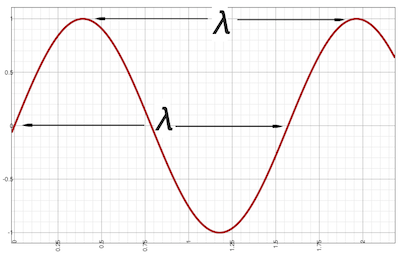Chapter One: An Acoustics Primer

6. What is wavelength?
Frequency is directly related to wavelength, which is represented by the Greek symbol lambda (λ). The wavelength is the distance in space required to complete a full cycle of a traveling wave.

The formula for an airborne* wavelength is:

Because a sound wave propagates through space at the speed of sound, calculations are done in the same units (inches, feet, meters, etc.).
~30.7 inches (≅ 13,504 inches/sec / 440 Hz)
~2.6 feet (≅ 1128 ft/sec / 440 Hz)
~0.8 meters (≅ 344 m/s / 440 Hz)
Notice that if the speed of sound were to change due to temperature and/or humidity and/or conducting medium, so too would the wavelength.
The wavelength of a sound is inversely proportional to its frequency. In other words, the higher the frequency, the shorter the wavelength. For example, in our human hearing range, a 20 Hz airborne wave has a wavelength of over 56 feet, while a 20 kHz wave has a wavelength of approximately 0.7 inches.

Wavelength Calculator
Enter a frequency in Hz: